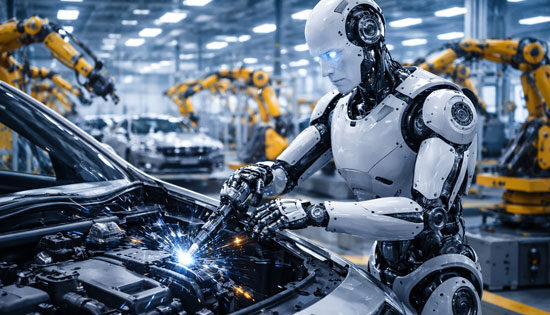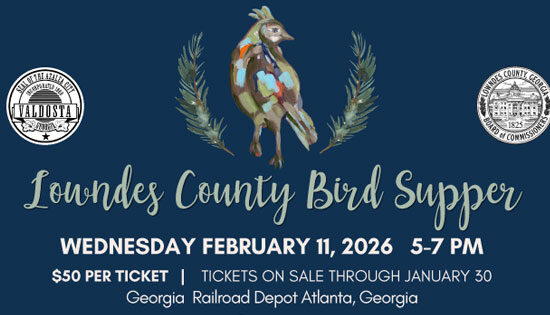ATLANTA – A new study reveals that Georgia ranked in the top 20 states experiencing most anxiety and depression symptoms.
Release:
- Louisiana experienced symptoms of anxiety and depression more often than any state, with Household Pulse Survey respondents experiencing these symptoms 5.6 percentage points more frequently than the national average.
- Mississippi was second, with respondents experiencing symptoms an average of 4.8 percentage points more than the national average, while Oklahoma was third at 4.2 percentage points more than the national average.
- South Dakota respondents reported the lowest incidence of anxiety and depression symptoms, at 5.5 percentage points lower than the national average.
A new study has revealed that Louisiana was the state with the highest incidence of anxiety and depression between 2020 and 2023.
Meditation music site MindWings analyzed Centers for Disease Control and Prevention data from the Household Pulse Survey between 2020 and 2023 to see which states reported symptoms of anxiety and depression the most.
1. Louisiana
Louisiana had the highest estimated incidence of symptoms of anxiety and depression in America between 2020 and 2023, with respondents reporting experiencing symptoms of anxiety and depression an average of 5.6 percentage points more than the national average at the end of each survey period.
2. Mississippi
Mississippi experienced the second-highest incidence of anxiety and depression symptoms between 2020 and 2023. Household Pulse Survey respondents from Mississippi reported experiencing symptoms of anxiety and depression an average of 4.8 percentage points more than the national average at the end of each survey period.
3. Oklahoma
Oklahoma experienced the third-highest incidence of anxiety and depression symptoms between 2020 and 2023. Oklahomans reported an average of 4.2 percentage points higher incidence of anxiety and depression symptoms than the national average at the end of each survey period.
4. Nevada
Nevadans reported experiencing symptoms of anxiety and depression an average of 4 percentage points more than the national average. This is the fourth highest incidence of anxiety and depression symptoms of any state.
5. West Virginia
West Virginia had the fifth-highest incidence of anxiety and depression symptoms between 2020 and 2023. West Virginians reported experiencing symptoms of anxiety and depression an average of 3.8 percentage points more often than the national average.
6. Arkansas
In sixth is Arkansas. Household Pulse Survey respondents from the Natural State reported experiencing symptoms of anxiety and depression an average of 3.5 percentage points more often than the national average.
7. Oregon
Oregon is seventh, with Oregonian respondents reporting experiencing symptoms of anxiety and depression an average of 3.3 percentage points more often than the national average.
8. Kentucky
Kentuckians reported experiencing symptoms of anxiety and depression an average of 3.3 percentage points more often than the national average. This is the eighth-highest incidence of symptoms for any state.
9. New Mexico
New Mexico is ninth, with respondents reporting experiencing symptoms of anxiety and depression an average of 3.1 percentage points more often than the national average.
10. Texas
Rounding out the top ten is Texas. Respondents from the Lone Star State reported experiencing symptoms of anxiety and depression an average of 2.7 percentage points more often than the national average between 2020 and 2023.
South Dakota experienced the lowest incidence of anxiety and depression symptoms between 2020 and 2023 of any state. South Dakotans reported an average of 5.5 percentage points lower incidence of anxiety and depression symptoms than the national average at the end of each survey period.
Robert Vergin, founder of MindWings, said:
“Mental health is incredibly important, and the past few years have been particularly hard for people to look after their mental health. Factors such as the pandemic and its economic repercussions stand out as significant stressors.
“Tools such as the Household Pulse Survey provide clear snapshots into how America was feeling between 2020 and 2023, and investigating these tools further helps identify areas that may need further support to address what might have been causing high prevalences of low mental health. This was particularly pronounced in Louisiana, which recorded the highest average difference to the national average in reporting experiencing symptoms of anxiety and depression between 2020 and 2023.
“There are many ways to improve one’s mental health, with options such as exercise, socializing, meditation, mindfulness, to name just a few things people can try themselves. As part of a wider system of support and therapy, they can play a large part in mental health recovery and maintaining good mental health.”
Table showing the average difference between each state’s estimated incidence of symptoms of anxiety and depression and the estimated U.S. average of symptoms of anxiety and depression at each survey end date. The table is ranked from the highest incidence of anxiety and depression symptoms to the lowest, with positive values indicating a higher prevalence of symptoms of anxiety and depression than the U.S. average.
| Rank | State | Difference in percentage points to the U.S national average for the percentage of respondents experiencing symptoms of anxiety and depression | Average percentage of respondents experiencing symptoms of anxiety and depression |
| 1. | Louisiana | +5.6 | 39.6 |
| 2. | Mississippi | +4.8 | 38.8 |
| 3. | Oklahoma | +4.2 | 38.1 |
| 4. | Nevada | +4 | 38 |
| 5. | West Virginia | +3.8 | 37.7 |
| 6. | Arkansas | +3.5 | 37.5 |
| 7. | Oregon | +3.3 | 37.3 |
| 8. | Kentucky | +3.3 | 37.3 |
| 9. | New Mexico | +3.1 | 37.1 |
| 10. | Texas | +2.7 | 36.7 |
| 11. | California | +2.3 | 36.3 |
| 12. | Alabama | +2.1 | 36.1 |
| 13. | Tennessee | +1.5 | 35.5 |
| 14. | Arizona | +1.4 | 35.4 |
| 15. | Florida | +1.4 | 35.4 |
| 16. | Georgia | +1.2 | 35.2 |
| 17. | Washington | +1.1 | 35.1 |
| 18. | Alaska | +0.8 | 34.8 |
| 19. | Missouri | +0.7 | 34.7 |
| 20. | Indiana | +0.5 | 34.5 |
| 21. | Utah | +0.4 | 34.4 |
| 22. | Colorado | +0.3 | 34.3 |
| 23. | Ohio | +0.1 | 34.1 |
| 24. | Pennsylvania | -0.1 | 33.9 |
| 25. | Illinois | -0.3 | 33.7 |
| 26. | New York | -0.3 | 33.7 |
| 27. | New Jersey | -0.7 | 33.3 |
| 28. | North Carolina | -0.8 | 33.2 |
| 29. | Michigan | -0.8 | 33.2 |
| 30. | South Carolina | -0.8 | 33.1 |
| 31. | Rhode Island | -0.9 | 33 |
| 32. | Massachusetts | -1.1 | 32.9 |
| 33. | Connecticut | -1.2 | 32.8 |
| 34. | Kansas | -1.2 | 32.8 |
| 35. | Idaho | -1.2 | 32.8 |
| 36. | Virginia | -1.2 | 32.8 |
| 37. | Maine | -1.3 | 32.7 |
| 38. | Wyoming | -1.5 | 32.5 |
| 39. | Maryland | -1.8 | 32.2 |
| 40. | Montana | -1.9 | 32.1 |
| 41. | New Hampshire | -2.2 | 31.8 |
| 42. | Hawaii | -2.3 | 31.7 |
| 43. | Vermont | -2.4 | 31.5 |
| 44. | Delaware | -2.8 | 31.2 |
| 45. | Iowa | -2.8 | 31.2 |
| 46. | Nebraska | -3 | 31 |
| 47. | Wisconsin | -4.4 | 29.6 |
| 48. | North Dakota | -4.4 | 29.6 |
| 49. | Minnesota | -4.9 | 29.1 |
| 50. | South Dakota | -5.5 | 28.5 |
| U.S. Average |











